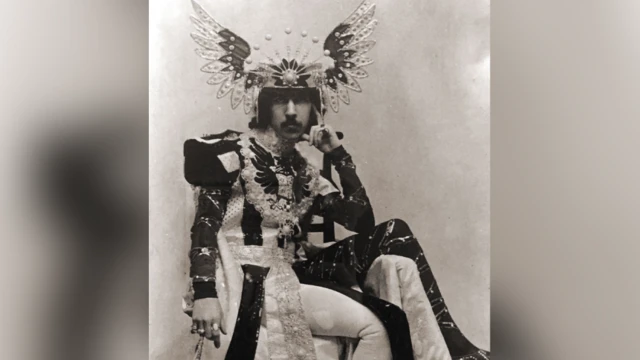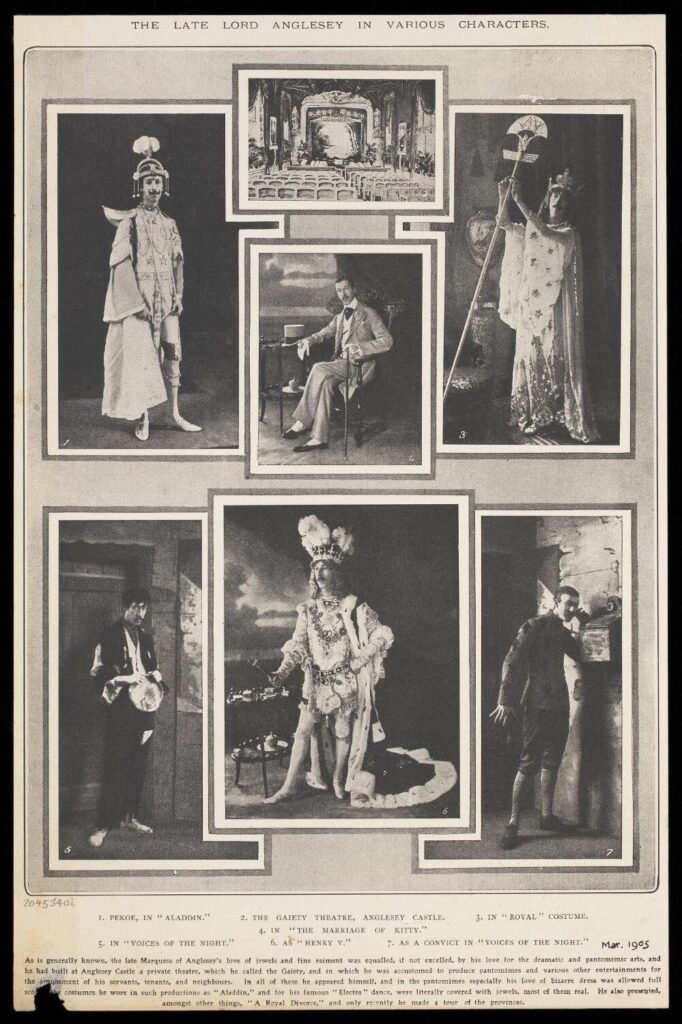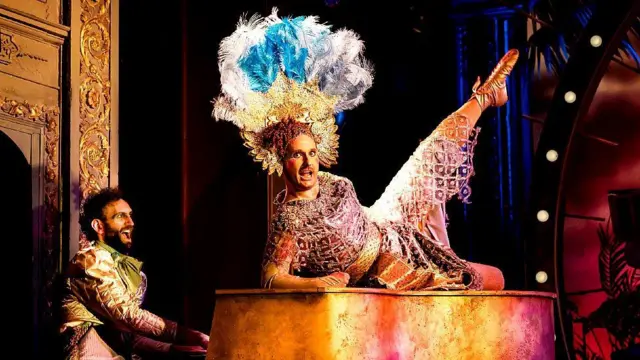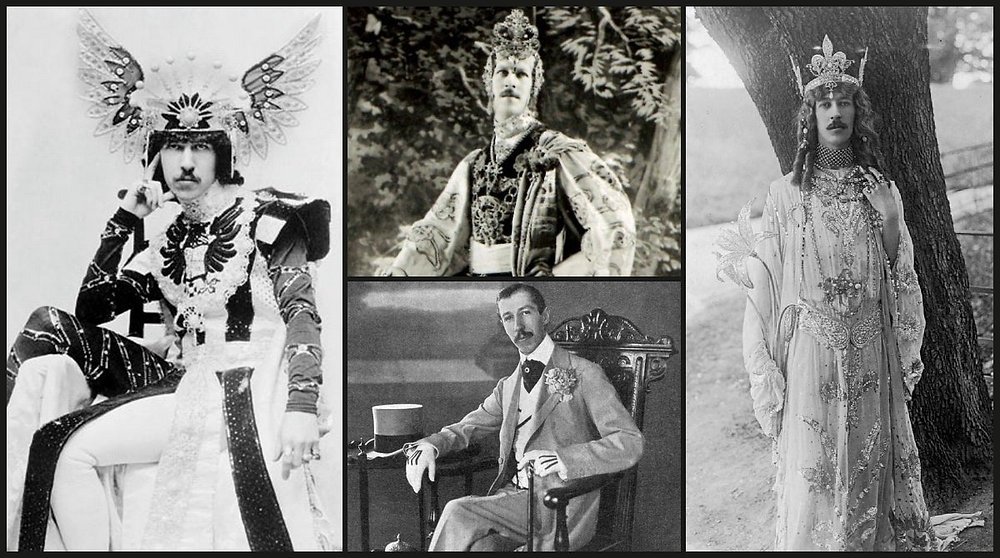From Embarrassing Ancestor to Icon: The Redemption of Henry Cyril Paget

In aristocratic family histories filled with statues and battlefield legends, few figures have undergone a more dramatic reappraisal than an embarrassing ancestor. Henry Cyril Paget, the 5th Marquess of Anglesey, was once seen as a flamboyant misfit. He squandered his inheritance on lavish performances and extravagant costumes. For years, his image was reduced to photos stuck to a bathroom wall. Yet today, this so-called embarrassing ancestor is embraced as a queer icon and visionary of Edwardian theatre. Once spoken of with discomfort, he is now celebrated for his bold individuality. Henry Cyril’s story shows how even an embarrassing ancestor can become a symbol of pride and cultural change.
How One Embarrassing Ancestor Became the Unlikely Star of Plas Newydd
Henry Cyril Paget inherited vast wealth and privilege in 1898. Rather than follow the traditions of military service or political duty, he embraced a life of extravagant self-expression. He converted the chapel at Plas Newydd in Anglesey into the ‘Gaiety Theatre,’ where he produced and starred in elaborate plays, donning diamond-studded costumes and ornate gowns. In an era when such displays were scandalous, his actions shocked the establishment.

While his contemporaries may have seen him as an eccentric with little regard for tradition, modern audiences interpret his choices differently. As the world gradually learns to accept and celebrate LGBTQ+ identities, many now view Paget’s rejection of convention as visionary.
Family Reactions: Embracing an Embarrassing Ancestor’s Legacy
Today, the 8th Marquess of Anglesey, Alex Paget, speaks fondly of his predecessor. He first learned of Henry Cyril from a photo tucked in a bathroom—a subtle reminder of how the family once handled his memory. People now embrace what they once dismissed as a ‘bit of a giggle’ as a symbol of individuality and creative spirit.
Alex reflects, “He wasn’t denied, but he wasn’t celebrated either. Now, we’re happy to acknowledge his extraordinary and marvellous life.”
Gender, Identity, and the Legacy of an Embarrassing Ancestor in Edwardian Times
Although Henry Cyril married his cousin, they never consummated the union, and she later annulled the marriage. While no definitive evidence about his sexuality exists, many believe he belonged somewhere on the LGBTQ+ spectrum. His affinity for ornate women’s clothing and theatrical self-expression suggested an identity that defied binary definitions.

In a society where alternative sexualities were not only taboo but illegal, Henry’s audacity was both radical and isolating.Yet it also paved the way for the visibility and self-expression that queer communities would champion in the decades that followed.
A Life of Theatre, Art, and Defiance
Henry spent part of his early life in Paris, where he immersed himself in European theatrical culture, before returning to the rigid structures of English nobility Upon inheriting his fortune, he resisted those norms. Renaming the family estate “Anglesey Castle,” he filled his life with art, performance, and opulence.
Inviting local villagers and elites alike to witness his plays, he acted as both performer and patron. His shows were not commercial enterprises—they were grand gestures of self-expression. Despite accusations of wastefulness, his artistic legacy now resonates with a generation exploring gender fluidity and performative identity.
Creative Tributes: From Humour to Homage
The musical How to Win Against History and the film Madfabulous have revived interest in Henry’s life. These productions aren’t meant as strict biographies. Instead, they use Henry’s life to explore broader themes like identity, alienation, and bold self-expression. Playwright Seiriol Davies first discovered Henry’s story during a childhood visit to Plas Newydd. There, amid grand family portraits, a few small laminated photos of Henry were casually Blu-tacked beside the toilet — a contrast that left a lasting impression.
That moment sparked a creative mission to bring Henry’s story to life—not as a joke, but as a reclamation.
The Inventor of the Selfie? A Modern Connection
Henry Cyril’s obsession with self-image, theatricality, and transformation has led some to dub him the “inventor of the selfie.” While tongue-in-cheek, the nickname reflects his understanding of image as identity. His costumes, some painstakingly recreated for modern productions, were statements not just of wealth but of selfhood.
The modern resurgence of interest in his life highlights how ahead of his time he truly was. In an era that celebrates authenticity, self-love, and breaking barriers, Henry Cyril Paget’s story feels less like an oddity and more like a prophecy.
Family Fortunes and Lost Inheritance
Henry’s financial decisions drastically altered the family’s trajectory. He spent an estimated modern equivalent of £60 million on his lavish lifestyle. Upon his death in Monte Carlo, bankrupt and estranged, the title and remaining estate passed to his cousin—ancestor of the current Marquess.

Although Alex Paget wryly remarks, “It’s a pity he spent all the money,” he also acknowledges that Henry belonged to a wider artistic and cultural movement. Like Oscar Wilde and Marcel Proust, Henry valued beauty, performance, and self-expression over social conformity and respectability.
The Personal as Political: Queer Icons in History
Henry Cyril Paget joins a lineage of historical figures whose lives challenge the mainstream narratives of history. By reclaiming his legacy, today’s world recognizes that identity is complex—and that queerness has always existed, even within the halls of aristocratic power.
His story speaks to those who have felt out of place, who have used creativity to survive, and who seek to be remembered for who they truly are—not just how others saw them.
From Shame to Spotlight
No longer the black sheep of the family, Henry Cyril Paget is now celebrated as an icon of individuality and creative resistance. The bathroom photos may remain, but they are now symbols of transformation—not exclusion.
In a society that once erased him, Henry now takes center stage.




